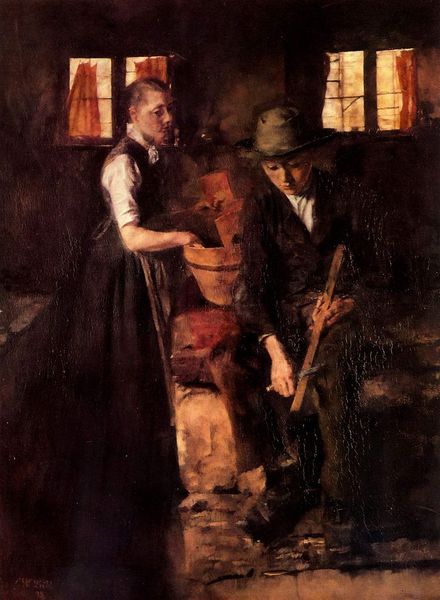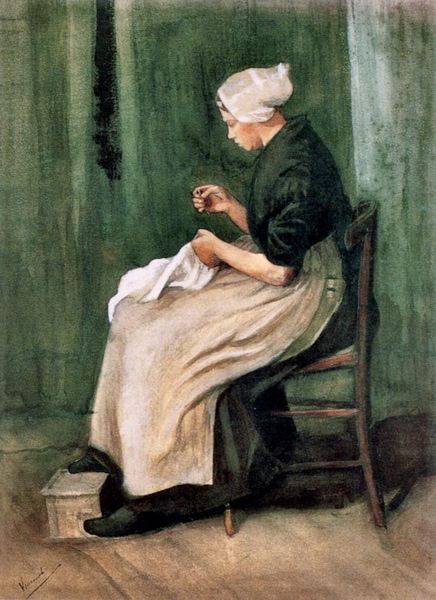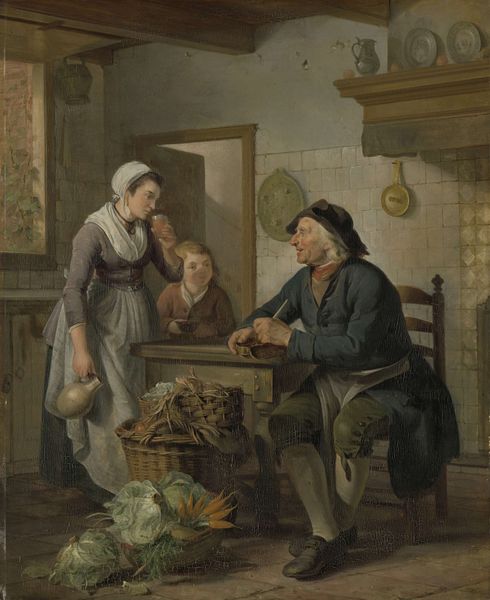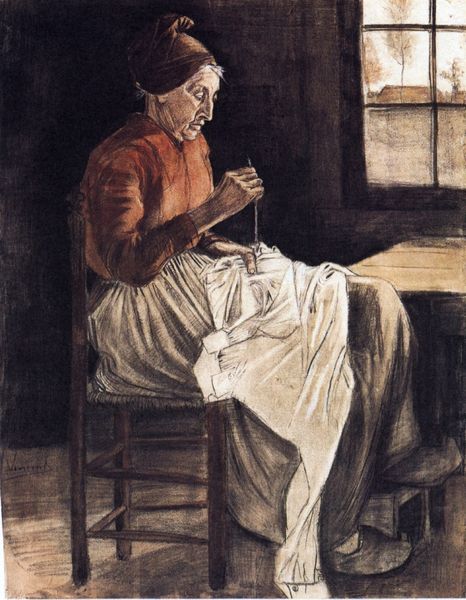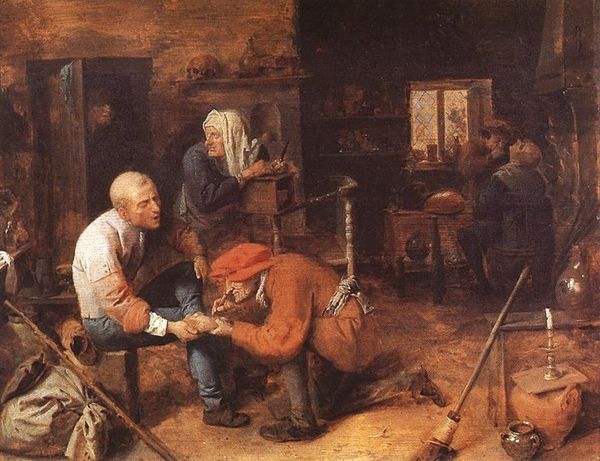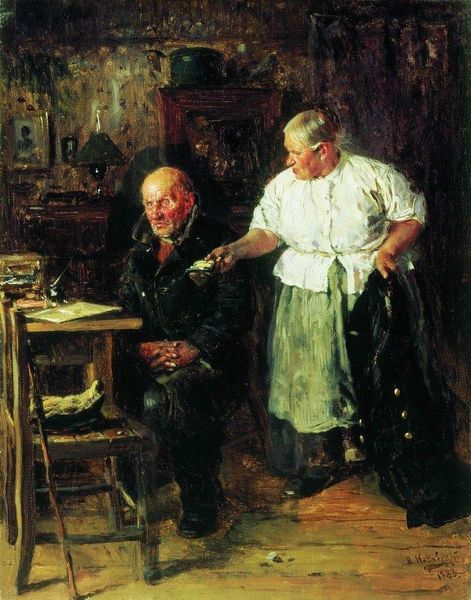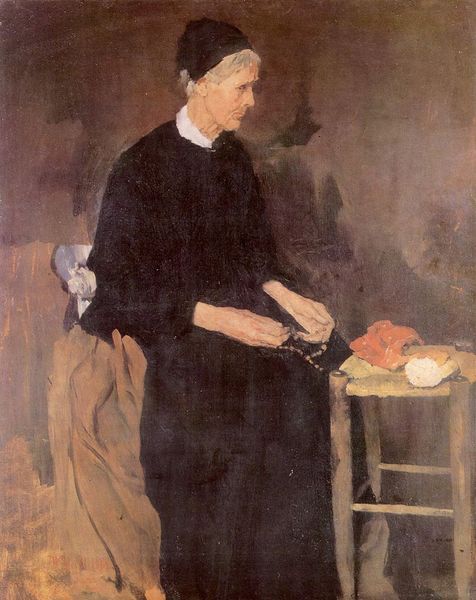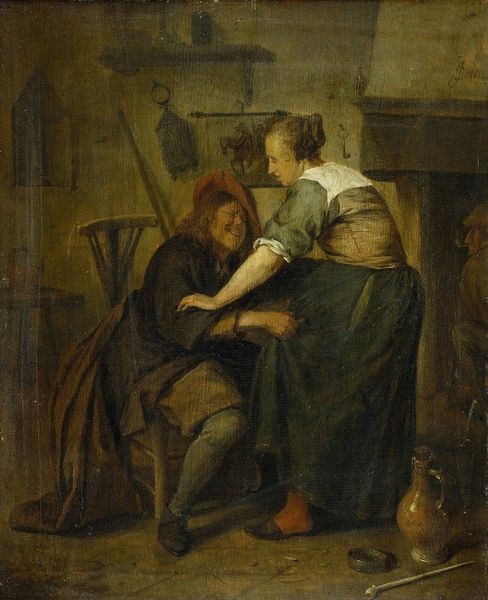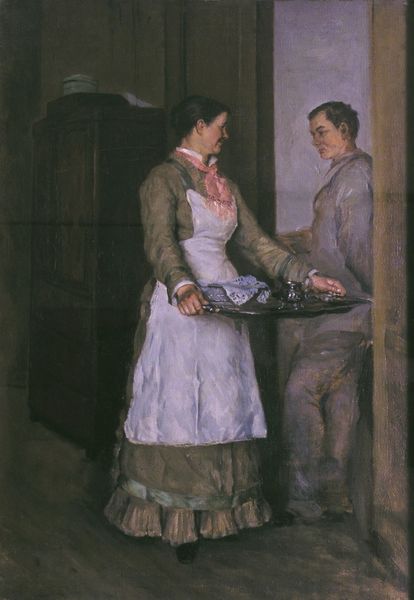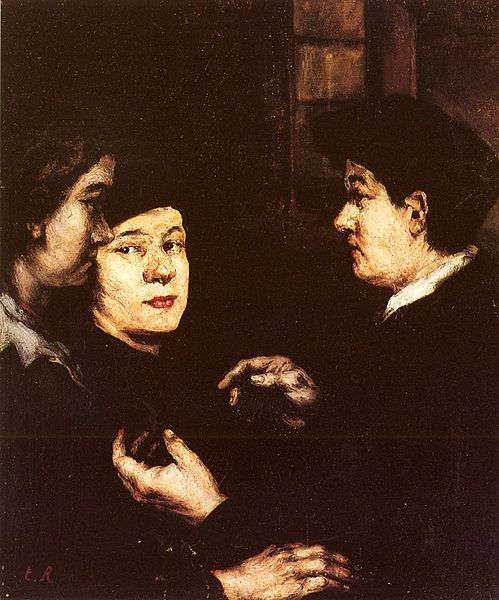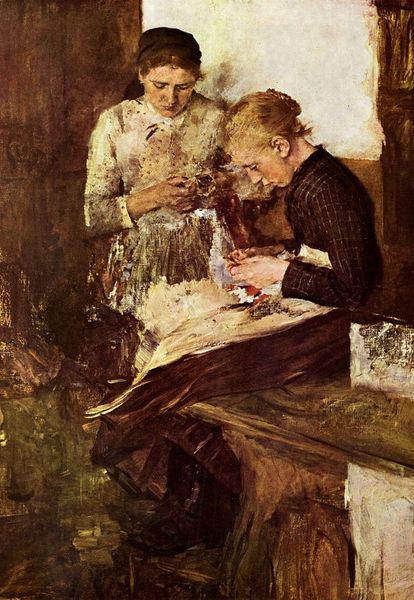
Copyright: Public domain
Curator: Here we have Wilhelm Leibl's "Der Spargroschen," or "The Savings," completed around 1877. It's an intimate glimpse into the daily life of a rural family. Editor: The subdued palette is immediately striking; mostly browns and greys. There's something almost somber about it, despite the seemingly mundane activity depicted. It looks like rough spun materials. Curator: Absolutely. Leibl was interested in representing the unvarnished reality of peasant life. His dedication to Realism led him to paint scenes like this one, showing a man carefully counting what appears to be a meager sum of money, watched by a woman who might be his wife. Editor: It's the way he renders the textures that grabs me. Look at the man’s weathered hands, the woman’s coarse apron—you can almost feel the roughness of the fabric. I bet Leibl emphasized direct observation and close study of materials over idealized forms. Curator: Exactly. The political ramifications are evident here, aren’t they? At a time of rapid industrialization and social change in Germany, artists like Leibl were trying to capture the essence of a way of life they saw disappearing. Their art highlighted the struggles and simple dignity of rural communities in Bavaria, such as poverty and labor conditions. Editor: There's also a deliberate resistance against the slick, polished style that dominated the Academy, in favor of a more tactile, almost raw aesthetic. That connects this painting with broader discussions about value – what counts as art, whose labor is recognized, and how different kinds of work are valued within society. Curator: It's compelling how Leibl uses genre painting to draw attention to class divisions. While depicting rural poverty may have initially been celebrated as reflecting "traditional values", these sorts of representations, I argue, also drew increased public awareness of issues concerning rural populations. Editor: Agreed. Leibl forces us to look closely at the lived realities of those often rendered invisible by the rush toward progress. I like the focus on material processes - it reminds us that this painting wasn't just conceived in an artist's mind, but also took considerable physical labor. Curator: Thinking about how museums exhibit such works also shifts our perception. By presenting these glimpses of ordinary existence, don't museums take a further step in assigning symbolic meaning to the labor reflected in everyday lives? Editor: Yes! And placing a painting like this within our collection highlights both the physical artistry and enduring value.
Comments
No comments
Be the first to comment and join the conversation on the ultimate creative platform.
